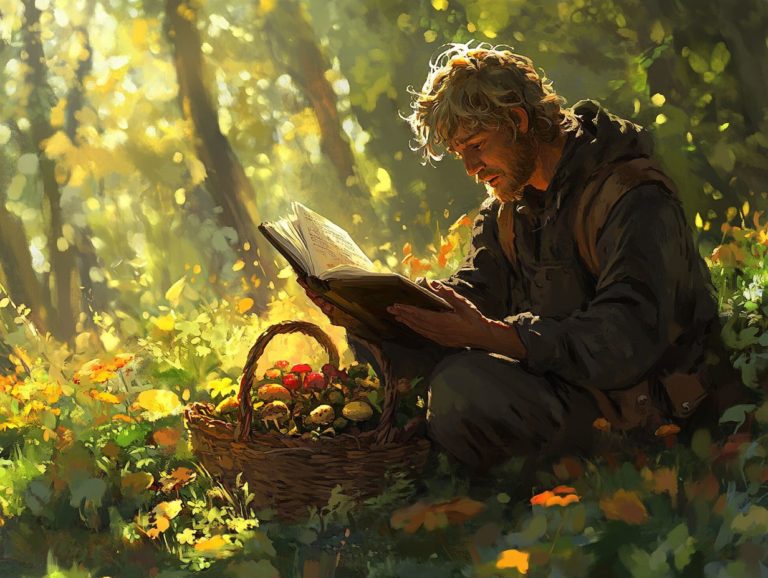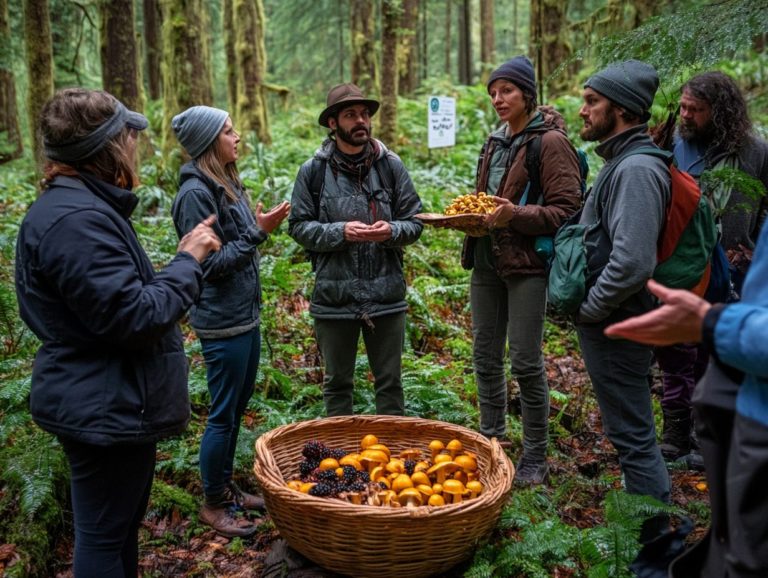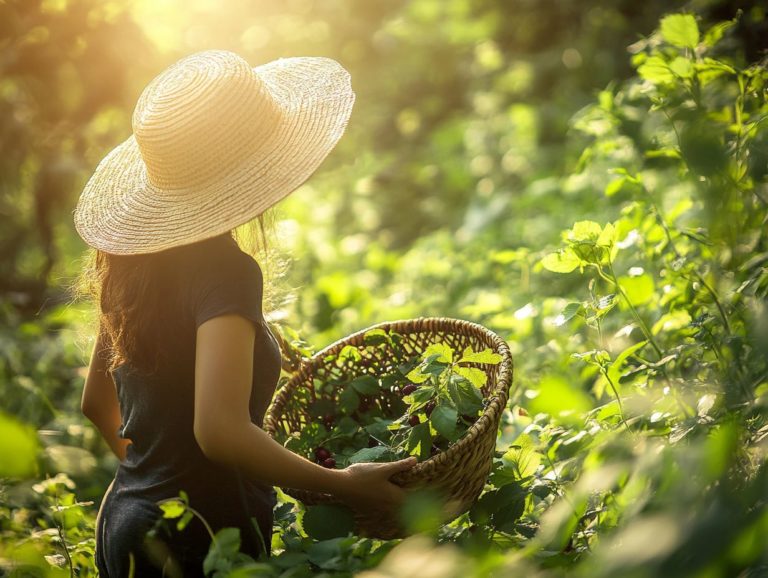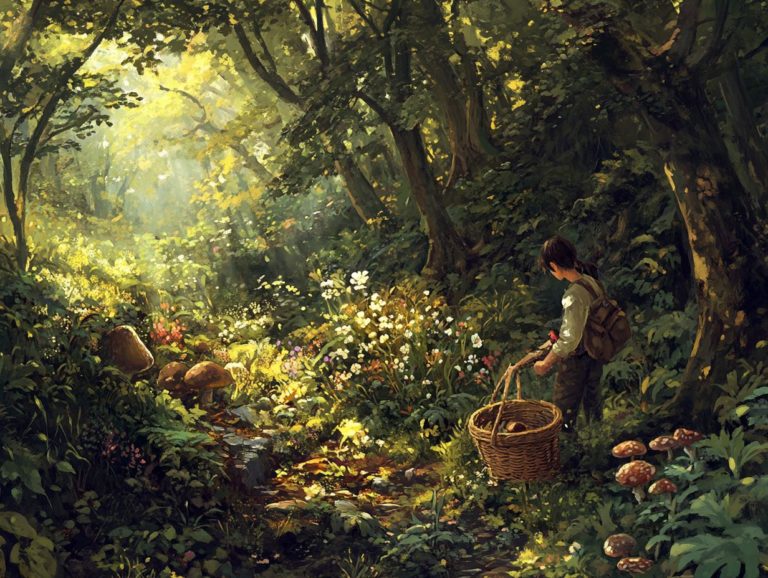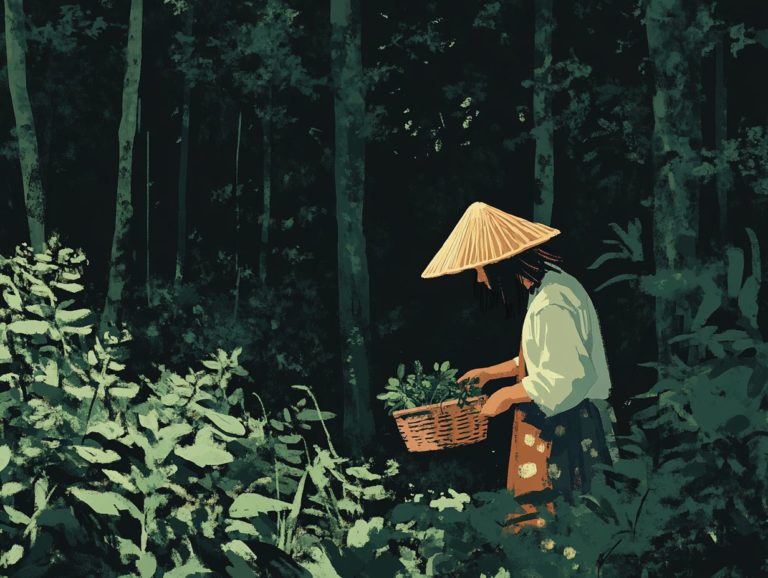The Impact of Foraging on Wildlife
Foraging is a key practice that helps wildlife thrive and significantly influences ecosystem health. This article delves into the definition and importance of foraging in nature, shedding light on the diverse strategies animals employ to locate food.
You ll discover how human foraging can disrupt these natural processes and affect wildlife populations. The piece also discusses ongoing conservation efforts focused on habitat protection and alternative food sources that can enhance local ecosystems.
Dive in now and uncover the exciting relationship between foraging and wildlife conservation, revealing how interconnected these elements truly are while addressing issues like environmental degradation and climate change.
Contents
- Key Takeaways:
- The Importance of Foraging for Wildlife
- Types of Foraging Behavior
- Effects of Human Foraging on Wildlife
- Conservation Efforts and Solutions
- Alternative Food Sources for Wildlife
- Frequently Asked Questions
- What is searching for food and how does it impact wildlife?
- What are the benefits of searching for food for wildlife?
- How does human searching for food affect wildlife?
- What can be done to minimize the negative impact of searching for food on wildlife and promote community health?
- How does climate change affect the searching for food behavior of wildlife?
- What is the role of searching for food in the survival of endangered species and the preservation mentality of nature conservation?
Key Takeaways:
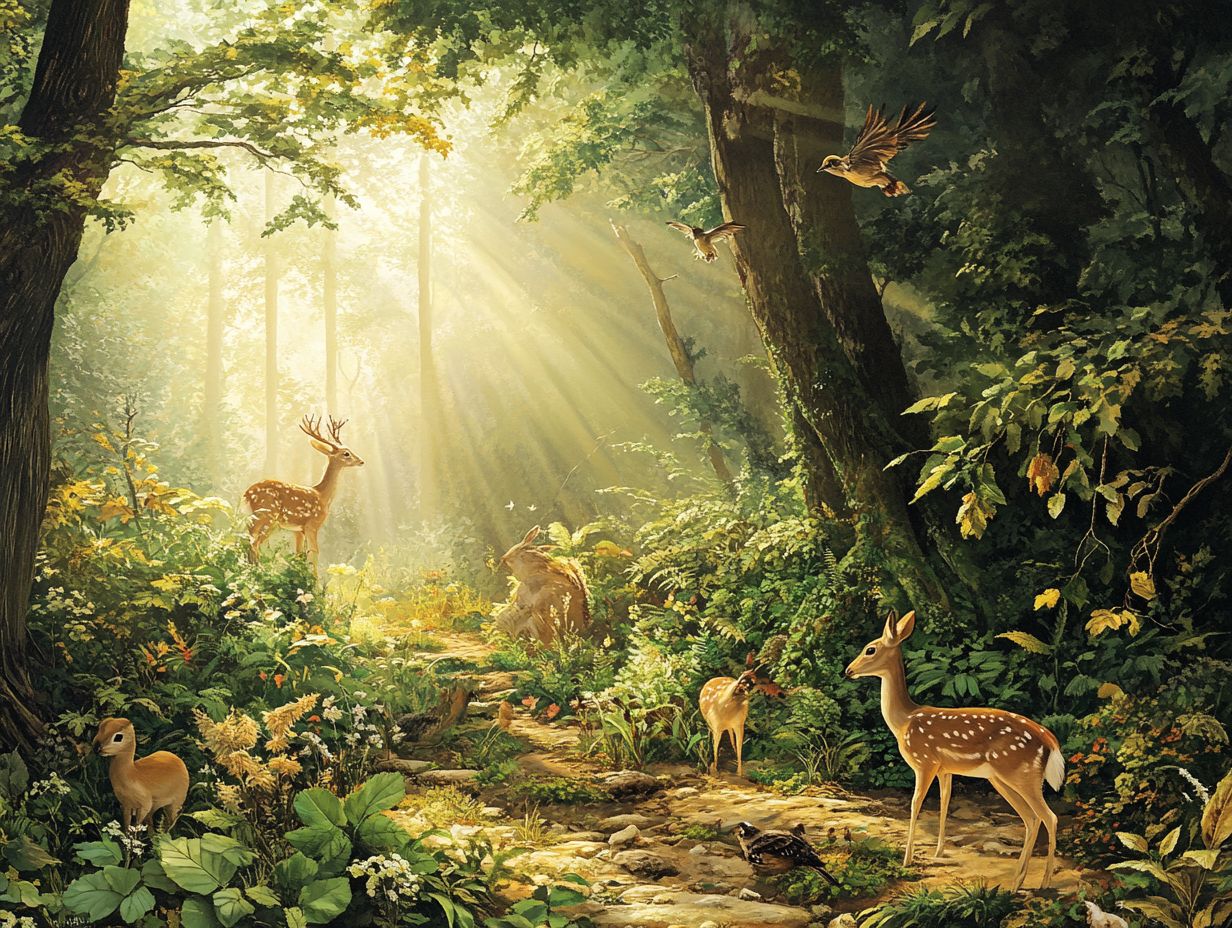
Foraging is vital for wildlife. It provides essential nutrients and maintains ecological balance.
Different species use various foraging strategies, such as grazing, scavenging, and hunting.
Human foraging can have harmful effects on wildlife and their habitats. However, understanding the impact of foraging on biodiversity along with conservation efforts and alternative food sources can lessen these impacts.
The Importance of Foraging for Wildlife
Foraging is a strategy that supports ecosystem health, significantly boosting the variety of life and food systems. This ancient tradition, often overshadowed by contemporary lifestyles, nurtures natural diets and embodies conservation principles, securing food sources for various species.
By actively engaging with local flora and fauna through foraging, you connect your efforts to a larger ecological narrative. This addresses pressing challenges like climate change, the effects of large-scale farming practices, and habitat loss, which are essential for sustaining a balanced ecosystem.
Definition and Role in Ecosystems
Foraging is the art of seeking out and gathering wild food resources, a practice that plays a pivotal role in sustaining healthy ecosystems and boosting biodiversity. This endeavor not only provides nourishment for various species, including ourselves, but also nurtures the intricate relationships between plants and wildlife.
When you engage in foraging, you actively contribute to the equilibrium of natural resources, ensuring that ecosystems flourish and remain productive. Collecting wild edibles like mushrooms, berries, and wild garlic aids in seed dispersal, promoting plant proliferation and enhancing genetic diversity.
Through foraging, you witness firsthand how interconnected life forms depend on one another for survival. This highlights the necessity of preserving these natural practices for the well-being of our planet.
Types of Foraging Behavior
Grasping the different types of foraging behavior is crucial for appreciating how both humans and wildlife engage with nature. Each employs unique strategies, including urban foraging, to seek out edible plants and other valuable resources, showcasing the remarkable adaptability of life in the wild.
Overview of Different Strategies
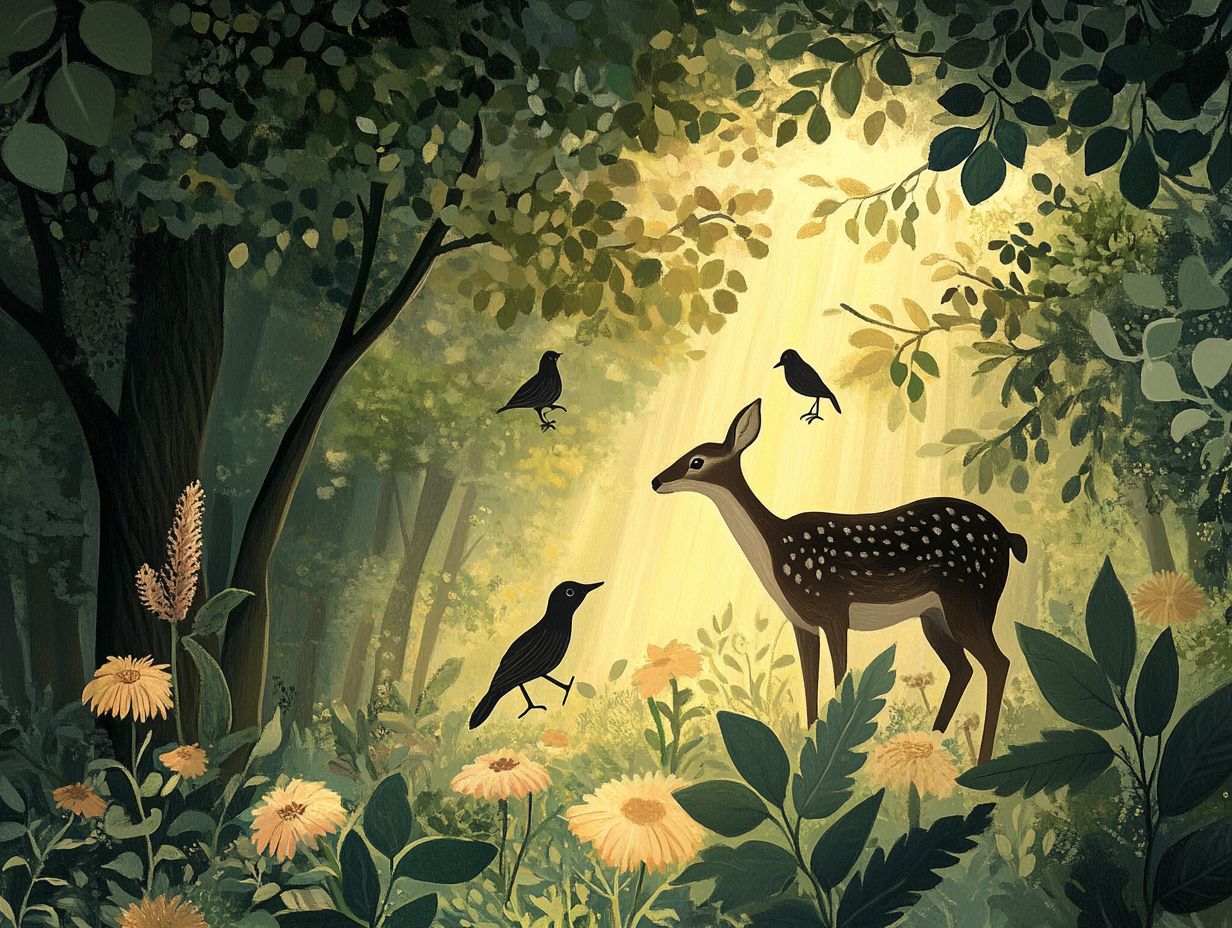
Your foraging strategies, much like those of wildlife, reflect a profound understanding of the environment. They hone in on the identification and use of edible plants and wild food sources.
These strategies require keen observation of seasonal changes and habitat characteristics. They weave together a rich tapestry of local knowledge passed down through generations. When you engage in foraging, you often find yourself sharing insights with community members about optimal harvesting times, food access, and sustainable practices. This fosters cooperation that strengthens social bonds and cultivates a collective responsibility for preserving unique ecosystems.
By maintaining such holistic knowledge, you not only support biodiversity but also deepen your appreciation for nature s intricacies. This understanding reinforces the importance of nurturing and protecting local environments for the benefit of future generations.
Get started with foraging today, and make a positive impact on your local ecosystem!
Effects of Human Foraging on Wildlife
Human foraging can significantly influence wildlife, shaping the delicate balance of ecosystems, biodiversity (the variety of different species in a particular area), and overall food security. For a deeper insight, understanding the ecosystem impact of foraging is vital for managing these interactions wisely and ensuring a thriving environment!
How Human Foraging Affects the Environment
The environmental and ecological impacts of human foraging can profoundly alter habitats. Understanding the role of conservation in wild foraging is crucial, as these changes affect biodiversity and disrupt the delicate balance within food systems.
When you engage in foraging without considering the long-term health of ecosystems, you risk overexploiting certain species. This can lead to declines in their populations and even local extinctions.
Such unsustainable practices not only reduce the variety of species in an area but can disrupt vital habitat structures, like forest undergrowth and underwater vegetation.
Recognizing the importance of the idea of conservation becomes essential. It promotes practices that protect both ecological integrity and the diverse life forms inhabiting these spaces. By embracing sustainable foraging methods, you can foster a more harmonious relationship with nature, ensuring that ecosystems thrive for generations to come. This is crucial given the challenges from urbanization and invasive species.
Conservation Efforts and Solutions
To combat environmental degradation and safeguard wildlife, you ll find a wealth of conservation efforts and solutions emerging. These initiatives advocate for land management practices that focus on preserving habitats while ensuring food security for local species, blending ecosystem health with community engagement.
Protecting Wildlife and Habitats
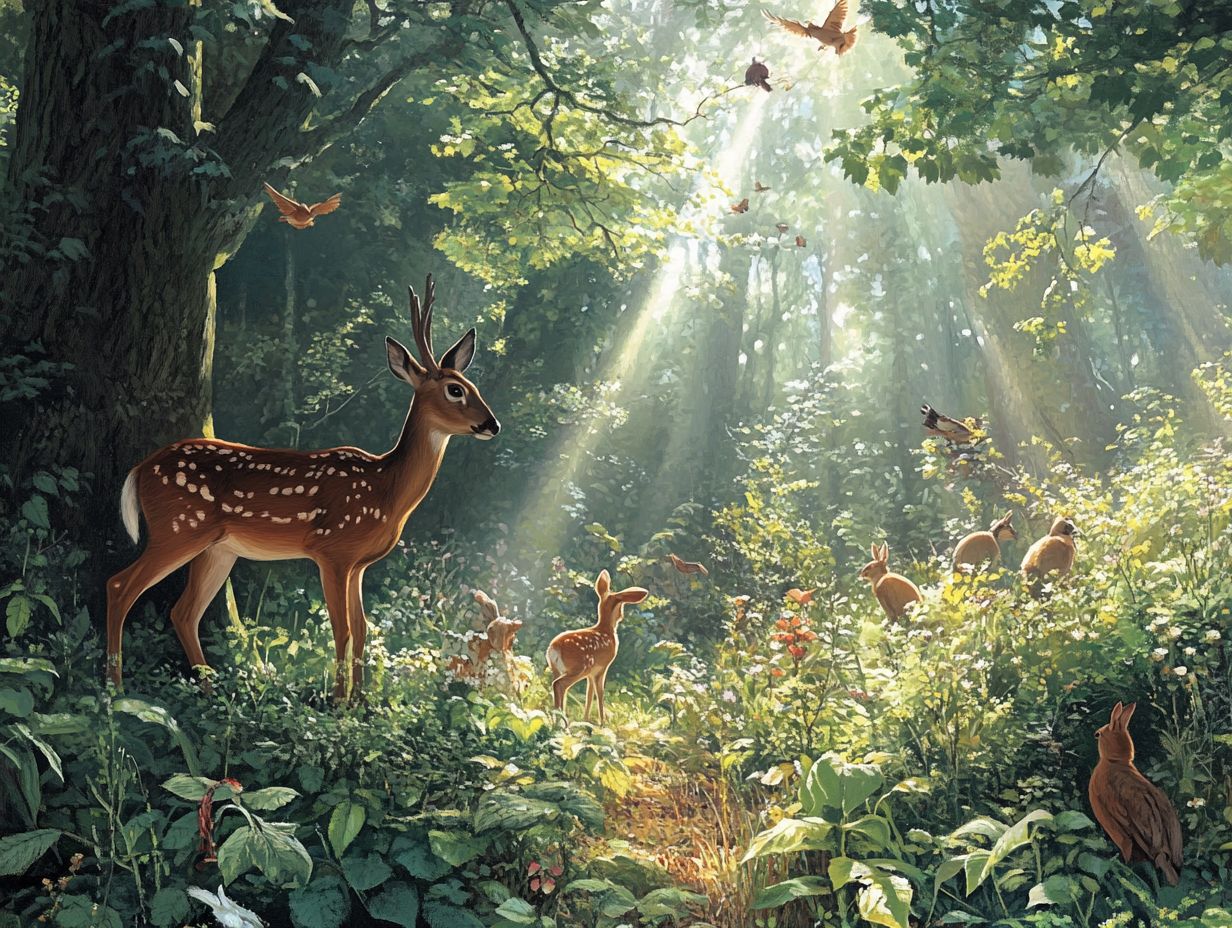
Protecting wildlife and their habitats is essential to conservation efforts. It requires your active engagement to foster biodiversity and support the health of ecosystems.
By encouraging local residents like yourself to participate in conservation initiatives, you can help safeguard the natural environment that sustains various species.
- Organizing clean-up drives
- Creating wildlife corridors
- Planting native trees
These efforts not only bolster local wildlife but also enhance the resilience of the ecosystem.
Engaging schools and local organizations in educational programs about the importance of local flora and fauna can instill a sense of responsibility and stewardship within the community. This promotes sustainable practices and food sovereignty.
Ultimately, when you witness the direct impact of your actions, it ignites a passion for protecting the delicate balance of nature. This ensures that both the habitats and their diverse inhabitants thrive for generations to come.
Alternative Food Sources for Wildlife
Exploring alternative food sources for wildlife, such as wild vegetation, food forests, and urban foraging, can significantly enhance biodiversity. This approach aligns seamlessly with a conservation philosophy focused on sustaining ecosystems. You can play an active role in fostering a more resilient natural environment.
Examples and Benefits
Consider the array of alternative food sources available for wildlife. These sources include:
- Native flowering plants
- Berry-producing shrubs
- Diversity of grass species
These options not only provide essential sustenance but also enrich the overall tapestry of biodiversity. For instance, native wildflowers attract pollinators like bees and butterflies. Meanwhile, berry bushes serve as a crucial source of nourishment for birds and small mammals.
By integrating these alternative food sources into their habitats, wildlife can truly flourish, leading to more robust ecosystems. The presence of diverse plant life nourishes a balanced food web, enhancing resilience against pests and diseases. This contributes to the natural equilibrium of habitats and supports efforts to counteract soil erosion.
Frequently Asked Questions
Join us in protecting our wildlife today! Every small effort counts!
What is searching for food and how does it impact wildlife?
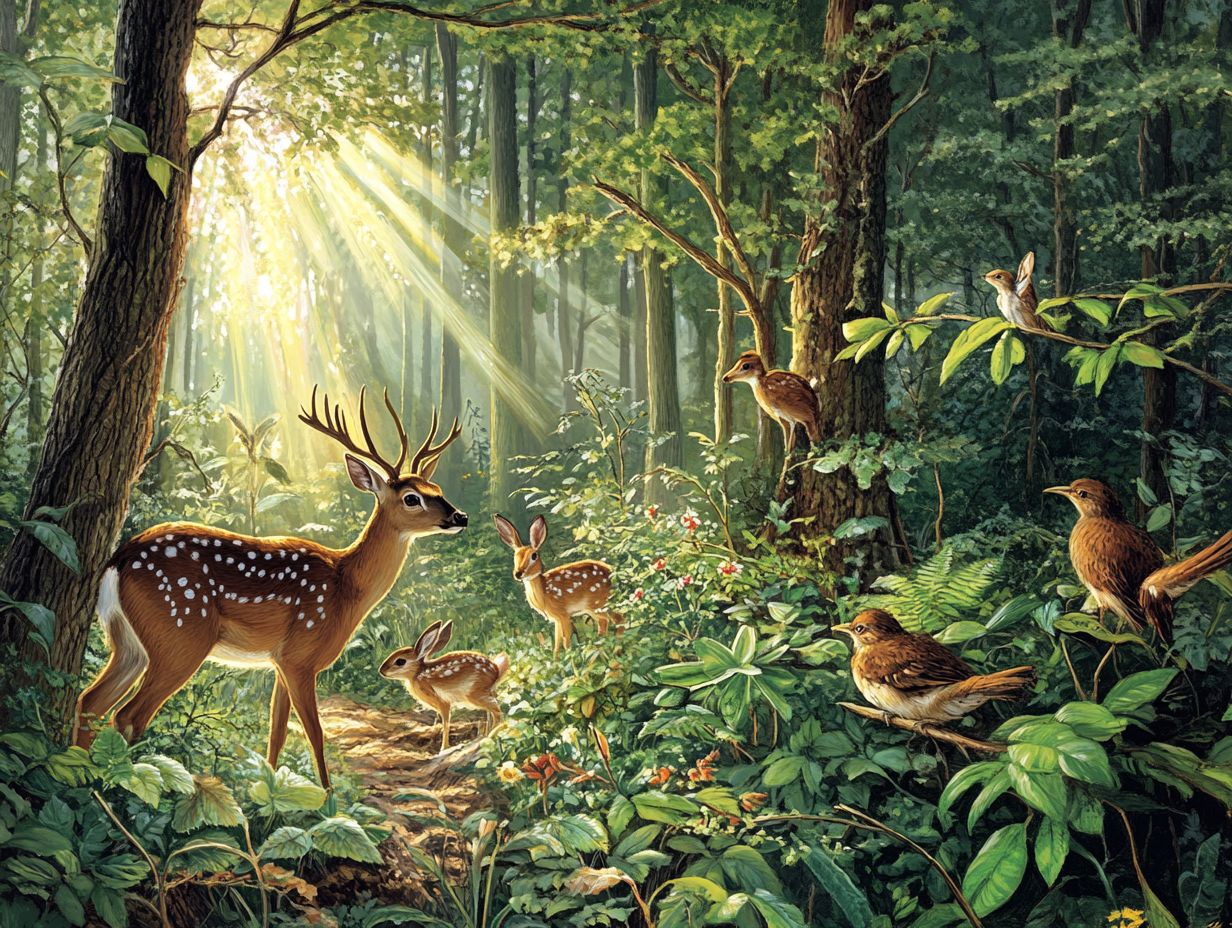
Searching for food refers to the act of finding food in the wild. It can have both positive and negative impacts on wildlife, depending on various factors such as the type of searching and the species involved.
What are the benefits of searching for food for wildlife?
Searching for food allows wildlife to obtain necessary nutrients and energy. This helps them survive and reproduce.
It also plays a crucial role in maintaining a balanced ecosystem by controlling plant growth and dispersing seeds.
How does human searching for food affect wildlife?
Human searching for food can have significant negative impacts on wildlife. It can lead to taking too many resources from certain species, habitat destruction, and competition for resources.
All of these factors can disrupt the delicate balance of an ecosystem and threaten wildlife survival.
What can be done to minimize the negative impact of searching for food on wildlife and promote community health?
One way to minimize the negative impact is by practicing sustainable searching for food techniques. This means only taking what is needed and avoiding harvesting from vulnerable or endangered species.
It’s also vital to respect protected areas and follow regulations set by conservation authorities.
How does climate change affect the searching for food behavior of wildlife?
Climate change can significantly affect the availability of food sources for wildlife. As a result, wildlife must adapt their searching for food behaviors.
It can disrupt seasonal patterns and migration routes, making it challenging for wildlife to find food and survive.
This is particularly concerning in modern lifestyles where agricultural conditions impact food production.
What is the role of searching for food in the survival of endangered species and the preservation mentality of nature conservation?
Searching for food plays a critical role in the survival of endangered species. By providing necessary nutrients and energy, it helps these species thrive and reproduce.
However, taking too many resources from their food sources through commercial searching can further endanger their populations.
This highlights the need for public policy recommendations that support sustainability and the health benefits of eating nutritious food.
We must act now to protect our wildlife’s future. By understanding searching for food, we can help create a world where wildlife thrives alongside humans!
It’s crucial to recognize Native Americans’ roles in traditional searching for food practices, which emphasize the balance between food production and environmental benefits.
Engaging in searching for food tutorials can educate individuals on responsible practices, helping to mitigate species extinction and the effects of invasive plants on ecosystems.

